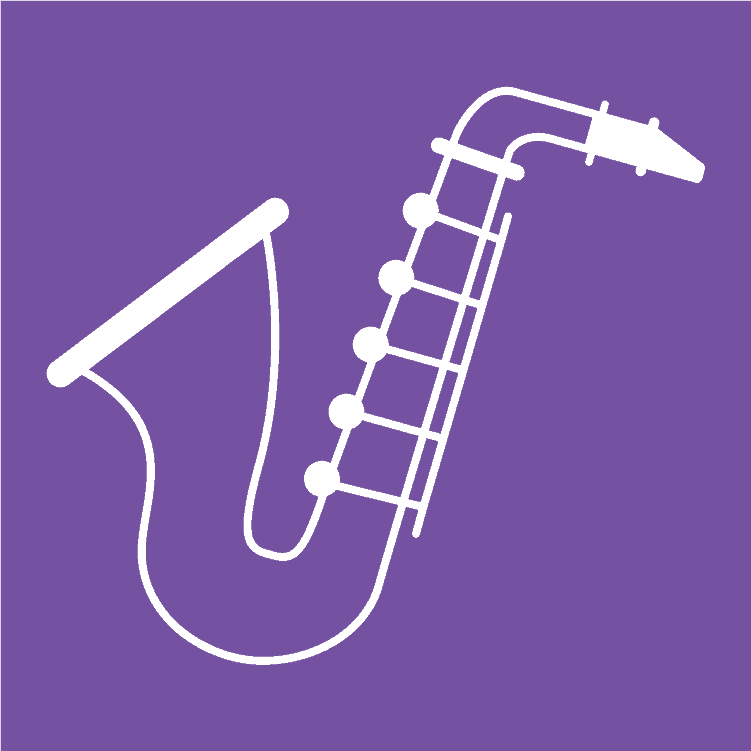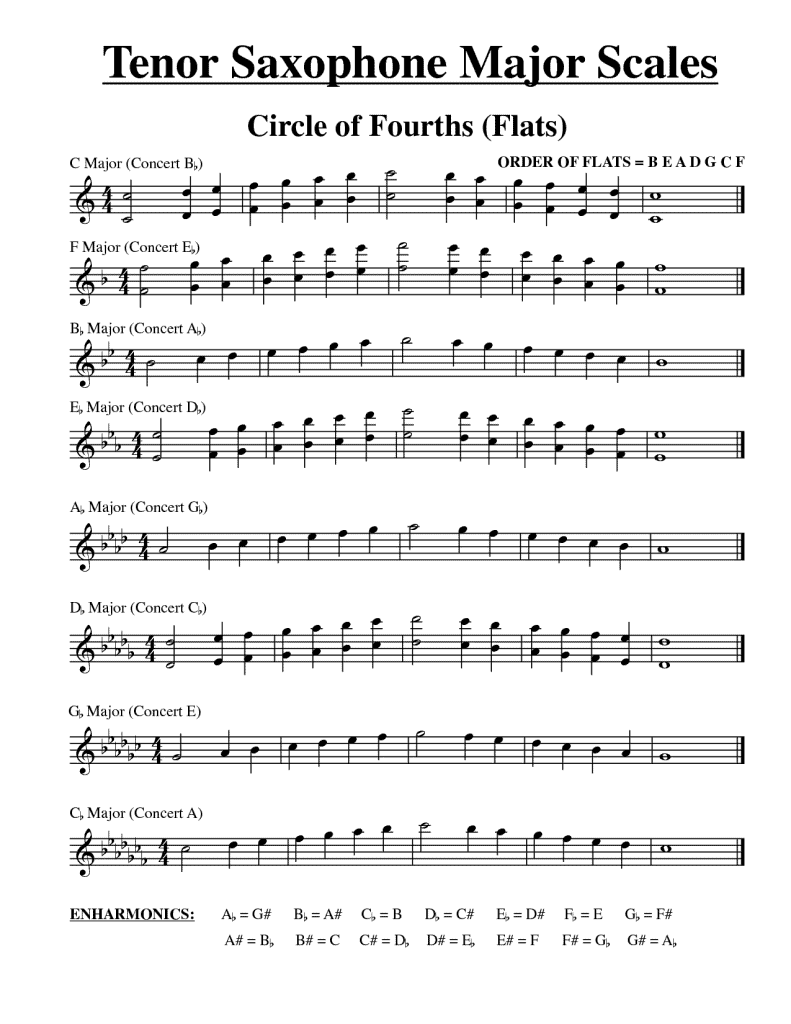Improve Your Saxophone Technique
Sort out your saxophone technique now...
Are you currently wanting to improve your saxophone playing? Then technique is one thing you should be focusing on first. A great technique is at the basis of any excellent player. It’s not possible to have a remarkable saxophone player without having a fantastic technique. As part of our ‘Beginner’s Guide To Learning The Saxophone’, hopefully, this section on technique will help you develop simply and quickly.

Daily Exercises
Many exercises are essential to gain a proper technique. Once you master these exercises, you’ll be able to play almost anything. That sounds like a grand statement – but don’t underestimate the word ‘master’!
If you work enough, you’ll be able to look at a section of music and be confident enough to learn it quickly. For each exercise, there is a specific way to practice it. Your practice is only as good as your form while you practice. So be disciplined about it, as practising exercises wrong is a complete waste of time! We have three key exercise categories that will help you…

1. Scales
Scales are those things that all musicians love to hate. When I grew up, I thought the only thing that was worse than practising scales, was practising arpeggios.
So what happens when a child becomes a professional musician? Why do they suddenly forget their hatred for scales and enforce it on their students?
Possibly because scales are the one thing that can make or break you as an instrumentalist Almost every melody is made up in parts, from a scale. Almost every accompaniment line follows a scale at some point. Almost every harmonic progression is built around scales. So you may not realise it, but listening to music means listening to many different scales. That means playing music means playing many different scales. It really is that important.
By knowing your scales well, your muscle memory will instinctively know what scale is part of what melody, bassline or harmony – and you’ll be able to play it easier and more accurately knowing this. You may even reach a point where you see what looks like a challenging pattern of notes, but are able to switch on to ‘autopilot’, knowing that they are in fact a series of scalic, or arpeggiated (i.e. these are the most important notes of a scale), patterns.
Every piece is set in a ‘key’. Every key has a different number of sharps or flats, and to start with it can be tricky to remember all the configurations. Scales help with this; every scale is different BECAUSE of the sharps and flats, so once you know the scales, you should know the keys. This then gives you a sixth sense where you can feel your way around the saxophone, and know which notes are likely to be right, and which are likely to be wrong.
Have you ever seen someone sight-read a complicated piece and wondered ‘how did they do that?’ The answer is patterns. When reading music, we end up reading a series of patterns, not each individual note. It’s exactly the same reading this paragraph. Did you realise I swapped the G and A around in the middle of the word ‘paragraph’? Thought not!

2. Arpeggios

The second most common tool in compositions are arpeggiated figures. Look at any melody; you’ll see either a mini-scale or a mini-arpeggio. Just like scales, if you know your arpeggios well, you’ll already know all these little snippets before you even practice the piece! Arpeggios also strengthen your knowledge of saxophone fingerings.
This may sound a slightly less engaging task than practicing flying around your scales everyday, but perhaps you can instead view long note practice as a nice rest-bite for the fingers!
Long notes are in fact a vital part of good saxophone practice, for they function as a means to improve: breath control, embouchure stability, dynamics (aka volume), and consistency and evenness of tone (we don’t want wobbly notes!).
Wow, long notes sure do provide a lot of bang for your buck, don’t they?!
3. Long Notes
General Saxophone Technique

Wrong technique makes playing more challenging and tiring. Incorrect posture can cause pain in the shoulders, neck, back and jaw. Awkward hand positions can give you stiff fingers, wrist soreness and limit your dexterity.
Fixing a bad technique can be tricky, so it’s essential to acquire good habits from the start.
Posture

Getting truly comfortable with how the saxophone feels on your person can take a little while. After all, it’s not often that we have a chunk of metal hanging from our neck in day-to-day-life! Playing the sax may be physically tiring at first, but don’t worry, the muscles in your core, back and shoulders will get stronger very quickly and soon you will forget your initial tiredness.
The main point to remember – and it is worth continually reminding yourself about this – is that the sax must come to you, NOT the other way around. That is, each time you play, you must establish good posture first, before dreaming of playing a note. “What, then”, I hear you cry, “is ‘good’ posture?”
Firstly, stand up nice and straight, feet planted squarely on the floor, hip-distance apart. Gently, bring the shoulders back and down (you don’t want to overarch the back, and nor do you want your shoulders trying to make contact with your ears!). This will establish a strong foundation, solidly grounding you and ensuring stability.
Focusing on the saxophone itself, you may be wondering where the bottom of the instrument should sit in relation to your body. There is a degree of flexibility here, for you can position the sax ranging from almost in the middle of your body, through to your right-hand side, sitting alongside your hip. Generally, most people settle somewhere in the middle. Finding the position which feels most natural to you may take a little time but you’ll find the spot that’s right for you soon enough. It’s also worth mentioning that you don’t want to be stiffly locked into a playing position, relax and allow yourself to have a little freedom of movement (the more confident you become in your playing, the more your body will naturally and subtly move as you express yourself through your music).
As we now shift our focus towards the top of the sax and finally making contact with the mouthpiece, it is imperative to remind yourself once again that the sax must come to you! This will ensure that you do not push your neck and head forwards to meet it (which over time would almost certainly lead to problems with neck/shoulder/jaw soreness and issues with sound production).
So, with a nice straight back and level head and shoulders, gently guide the mouthpiece towards your mouth. Adjust your neck strap so that your head is not tilted upwards (this will put a strain on the neck), nor downwards (in this case, you will not be allowing the neck strap to take the full weight of the sax and will be placing unnecessary strain on your right hand).
Breathing and Embouchure

We introduced the importance of good breathing technique in tandem with forming the correct embouchure, in ‘How to Play the Saxophone’. We’ll share a brief recap here, plus dig a little deeper into some additional exercises and concepts that can help.
Now that we have outlined the perfect posture, this is a good time to remind ourselves how to breathe effectively when playing a wind instrument.
You may hear tutors/fellow saxophonists talking of ‘air support’, which can be a slightly confusing concept if not properly introduced, given the involuntary nature of the act of breathing! Essentially, what this term refers to is the quality of the breath (shallow/deep) and how efficiently the air is then distributed through the mouth and into and down the instrument tube. Good breath technique is integral to good sound, if you boil it down to a single concept, it’s as simple as that. Additionally, it will limit your chances of light-headedness as a beginner placing new and exciting demands on your body.
There are a number of different images tutors refer to when helping a new student to understand the concept of a good breathing technique, including imagine your stomach is a balloon and you are trying to blow it up, think about the king of deep breath you take in before you need to cough or before a big yawn. As you move this breath through your body and transfer it into the saxophone, you now want to consider how you are funnelling the air. Imagine that you are trying to blow a piece of paper against the wall straight in front of you, with the task of keeping it in position and not allowing it to slip…. you guessed it…This is in fact a real exercise that can help improve your breathing technique! Start with tracing paper or cigarette paper which is thinner, eventually building up to thicker material…have fun!
In your efforts to establish a good breathing technique, we must also be mindful not to neglect our mouth position (I know, there is much to think about at the same time!). We’ll just remind you with a brief summary, of what constitutes a ‘good embouchure’.
Firstly, top teeth rest gently on the top of the mouthpiece, i.e. they need to be stable and not move around, but be sure you are not biting downwards (you don’t want either a dent in your mouthpiece or a trip to the dentist!). A small portion of your bottom lip curves over your bottom teeth, essentially acting as a cushion. Close the sides of the mouth around the mouthpiece so that you have created a vacuum.
To extend this discussion and push a little further into the realms of a ‘good embouchure’, you may like to create a little smile with the cheeks (NB, not the lips! For this will likely create a gap at the corners of the mouth and cause air leakage. Instead, just think of smiling with your eyes!). This may sound odd, but this can help to lift the sound a little, both in pitch and tone quality, through subtly changing the interior shape in your mouth cavity. If we’re honest, the first few times you play your sax, you may produce a sound that is somewhat ‘honky’ but don’t worry, this will soon improve, especially if you are always striving to play with a well-established embouchure!
Bonus Tips...
Sight Reading

If you can, you should try and sight-read every time you practice.
When sight-reading, it’s advised that you read something just under your current playing level. This way, it’s a challenge, but not too much of a challenge…
Just don’t fall into the trap of reading something that’s too easy – your sight-reading won’t improve if everything is a walk in the park!
And I know this sounds obvious, but remember; for it to be sight-reading; it needs to be a piece of music you have never seen or practised before.
Record yourself and listen back whilst reading through the music – try and develop a critical ear, figuring out where/what mistakes you might be making and how to fix them next time around.
Fingering

Most people underestimate the importance of fingering.
Fingering is what allows you to play as fast as you need. Your brain learns through creating neurons. The more times you repeat an action – precisely the same action – the more ‘hard-wired’ that neuron becomes, and the more your body and brain can do something on ‘auto-pilot’.
The key here is PRECISELY the same. If you don’t know your fingerings, each time you come to play something, you’ll choose a random array of what finger plays what. This is not building a strong neuron – it’s building unpredictability.
Play through passages slowly and note on the sheet music any visual prompts you need, related to fingering patterns, to help overcome hesitation. This, of course, goes back to your scales and arpeggios!
You’ll soon find you are naturally improving your dexterity and that if you practice without leaving it to chance, you’ll be successfully flying around the saxophone in no time.
Improve Your Saxophone Technique - Summary
Most things in life work well when you take the time to plan them. Playing saxophone, and improving your technique, is no different. Challenge yourself on a daily basis – and remember that building a strong technique is the foundation of your playing. The time taken here will make your life easier (and the process much more enjoyable!) down the road…
About the Author
Robert Emery
Robert Emery is Founder & CEO of Ted's List. He has performed all around the world as a conductor and pianist. From Sydney Opera House to the Royal Albert Hall, Robert has enjoyed bouncing around on stage in most of the major venues in the world. As a record producer, he has worked on fifteen No 1 albums, and hopes he can get to sixteen asap!
The Times called him 'the eccentric barefooted maestro' and the Mail quoted that 'the assured baton was controlled by the rather energetic and brilliant conductor'.
Robert has a wife (Mrs. E), two children (Master T and Master A) and four cats (Merlin, Mulberry, Partridge & Penguin). Between performing, producing, composing and running Ted's List, he runs an entertainment business called The Arts Group, comprising of a symphony orchestra, choir, live event production house, digital TV company and artist agency. Any spare time is usually devoted to sleep.
Other posts by this author
Discover The Four Items In This Weeks Email
Will you be losing out? Many of us get swamped with messages, however, I can guarantee there is one you’ll not want to overlook; our 4 Feature Friday email.
Every Friday, I’ll send a quick email in order to treat you to some of the great things which I’ve recently uncovered.
It could literally be about anything regarding music. It’ll end up in the e-mail if I believe you’ll like it!
Touring the earth as a music performer means I get to experience things you wouldn’t believe, and sharing it with you makes a lovely finish to the week. Join absolutely free directly below.
Read the next post in this series:




